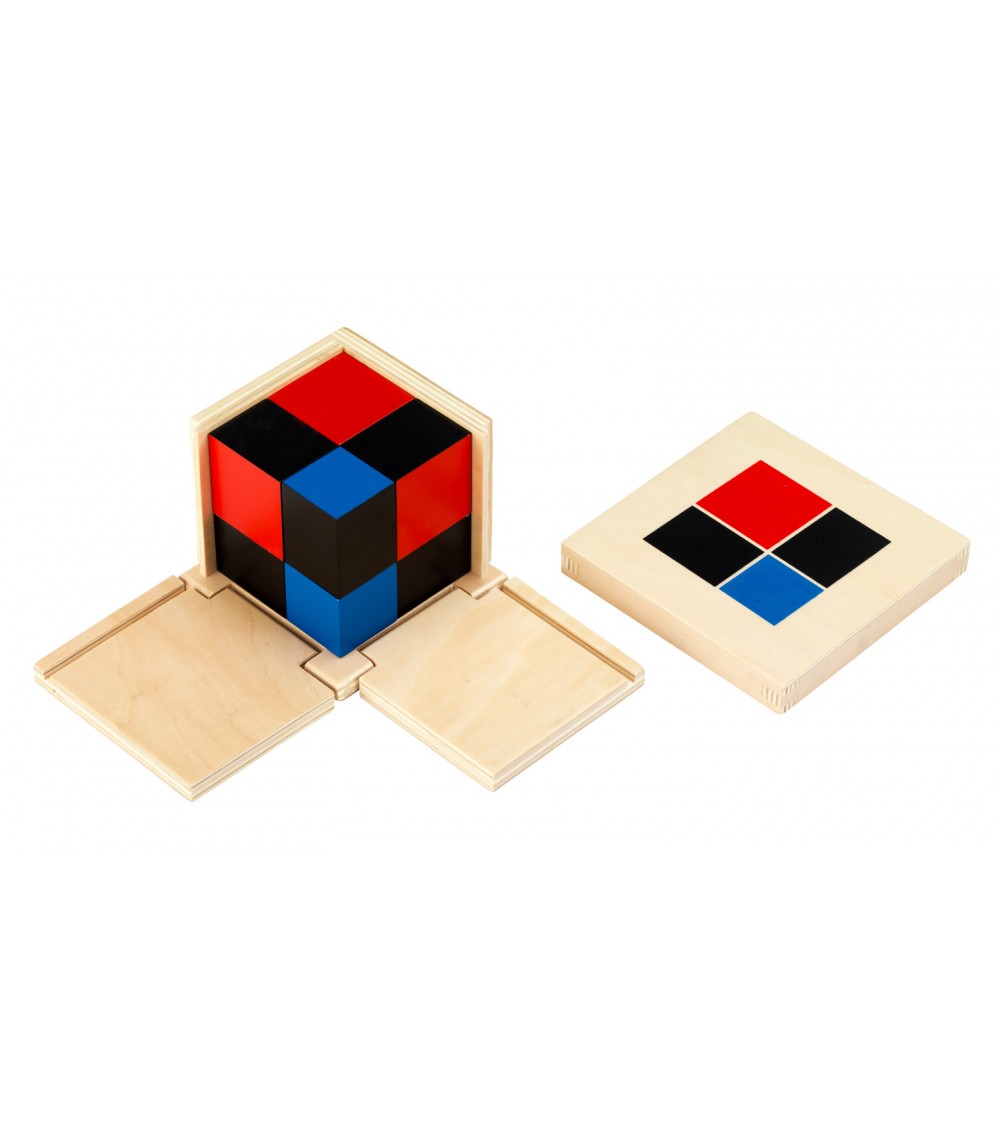Binomial Cube
Binomial cube. The binomial cube to get to know the three dimensions made of wood, approx. 9 x 9 x 9 cm
The binomial cube (binomial cube) is two-part (binomial). It consists of 8 individual blocks. When building, you start with the largest cube. By joining surfaces of the same color, the child learns three-dimensionality by building the binomial cube in three directions.
Depending on the level of development, the child can also name each individual cube with numbers or letters. Calculations such as 4²x 3 or 4 x 4 x 3 are also possible with the binomial cube.
Application, advantages, areas of application for this Montessori material:
ü Recognize the binomial square
ü Make abstraction tangible
ü First introduction to algebra
ü Getting to know the three dimensions
Montessori material for children from 4 years
Scope of the Montessori teaching material:
ü 8 colored cubes, wood
ü 1 hinged frame in the shape of a cube, wood, approx. 9 x 9 x 9 cm
ü 1 lid for the frame, wood
Instructions for the binomial cube
The adult removes the lid of the wooden box and folds open the side walls. Now all the upper cube elements are removed and set aside, then the lower ones.
For easier assembly, the cubes or prisms are sorted by color and the lid of the wooden box is added. The side faces of the box remain open for the construction of the binomial cube.
The correct arrangement is marked on the lid. The adult begins with the red cube (cube). This is placed in the corner of the wooden box. A prism from the red-black prisms is selected and placed in such a way that the red side surface rests against the side surface of the cube; red to red. The other red-black prism is placed on the other side of the red cube. Now two black sides can be seen from the front (in the gap).
The black-blue prism is now placed in this gap (black on black; thus with the blue surface facing up or down). The first level of the binomial cube is now complete.
The first level is now the template for the second level. The red-black prism is placed in the corner of the box with the red side over the red cube. The black-blue prisms are placed on the left or right of the red-black corner prism (again colour on colour, here black on black). The blue cube is inserted into the remaining gap.
You can now compare whether the pattern of the completed binomial cube matches the drawing on the lid.




